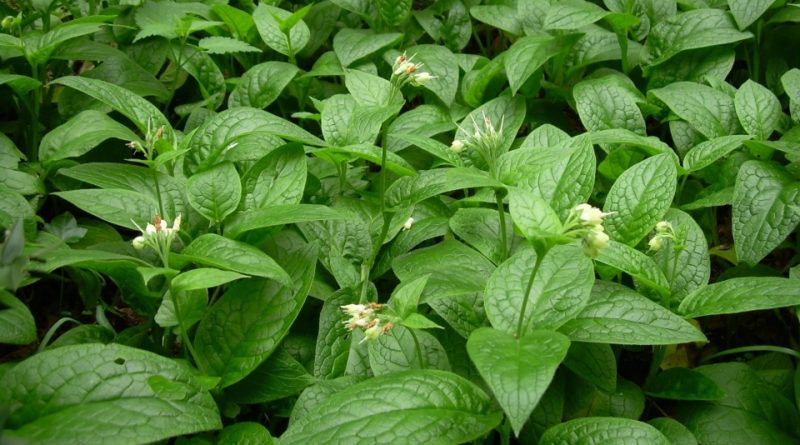Symphytum bulbosum
Symphytum bulbosum
Bulbous comfrey (Symphytum bulbosum K. F. Schimp.) Is a herbaceous species belonging to the Boraginaceae family.
Systematic –
From a systematic point of view, it belongs to the Eukaryota Domain, Plantae Kingdom, Magnoliophyta Division, Magnoliopsida Class, Lamiales Order, Boraginaceae Family and therefore to the Genus Symphytum and the S. Bulbosum Species.
The terms are synonymous:
– Symphytum clusii Gmelin;
– Symphytum macrolepis J. Gay ex Rchb .;
– Symphytum punctatum Gaudin;
– Symphytum tuberosum subsp. bulbosum (K.F. Schimp.) P. Fourn .;
– Symphytum zeyheri K.F. Schimp ..
Etymology –
The term Symphytum comes from the Greek συν syn with, together and from φυτόν phytόn plant: plants that grow in groups.
The specific epithet bulbosum comes from bulbus bulb, onion: bulbous.
Geographical Distribution and Habitat –
Bulbous comfrey is a species native to southeastern Europe and present in all regions of Italy.
Its habitat is that of deciduous deciduous forests, especially in clearings, and in hedges, on rather deep clayey soils, below the lower mountain belt, where it grows from sea level up to 1000 meters above sea level.
Description –
Bulbous comfrey is a perennial species of average size between 20 and 40 cm; it is a somewhat hairy plant with an erect stem.
The leaves are numerous, with an elliptical to lanceolate leaf, of a beautiful intense green and with basal petiolate; the cauline leaves are smaller and progressively shorter petiole, the upper ones are sessile and running on the stem.
The flowers are pale yellow in color, gathered in a dense top, corolla with inside lanceolate scales emerging from the tube.
The flowering period is between February and May.
The fruits are microbasari (tetranucule) with (2) 4 mericarpi (nucule) monosperms, of 3-4 mm, with wrinkled surface, greenish brown when ripe, with a main crest that crosses them along the entire length and other secondary ones, more short. Base with spiny teeth and 3 mm protruding strop.
Cultivation –
Symphytum bulbosum is a spontaneous plant that grows in temperate Mediterranean climates on soils of different nature.
However, it can be propagated starting from the seeds to be collected at the end of the vegetative period, to be conserved and sowed in autumn-winter.
Uses and Traditions –
Bulbous comfrey is a spontaneous plant that can be used for food
The parts used are young shoots and tender leaves, boiled and seasoned or cooked, along with other herbs, in soups. It is advisable to collect this plant, for these purposes, in the period from February to April, before the parts become too leathery and difficult to cook.
Preparation method –
Of the Symphytum bulbosum, young shoots and tender leaves are used for food.
With these parts it is boiled, as for other vegetables, after which they are seasoned together with other herbs, in soups.
According to some sources, in the Sorrento peninsula and in the Lattari Mountains some housewives use comfrey as an ingredient of the ‘Menesta mmaretata’, a typical dish prepared for the Easter holidays.
Guido Bissanti
Sources
– Acta Plantarum – Flora of the Italian Regions.
– Wikipedia, the free encyclopedia.
– Treben M., 2000. Health from the Lord’s Pharmacy, Tips and experiences with medicinal herbs, Ennsthaler Editore
– Pignatti S., 1982. Flora of Italy, Edagricole, Bologna.
– Conti F., Abbate G., Alessandrini A., Blasi C. (edited by), 2005. An annotated checklist of the Italian vascular flora, Palombi Editore.
Warning: Pharmaceutical applications and alimurgical uses are indicated for information purposes only, they do not in any way represent a medical prescription; therefore, no responsibility is accepted for their use for healing, aesthetic or food purposes.


